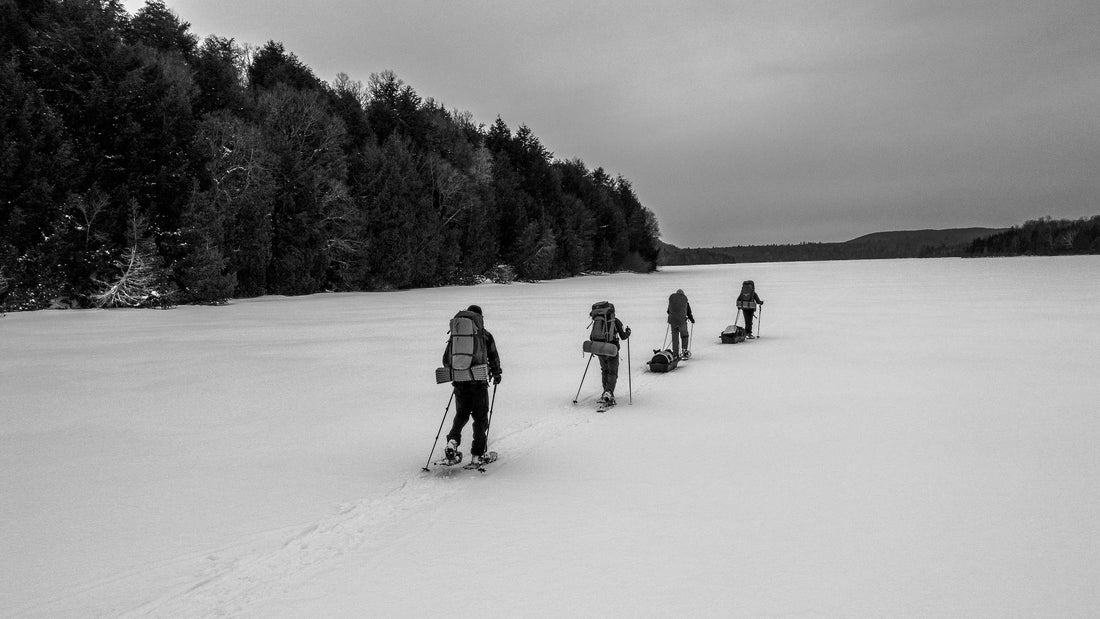
Crossing Over Frozen Lakes Safely: A Guide for Winter Campers
Share
Winter camping can be a thrilling and unforgettable experience, but it also requires a certain level of preparedness and safety awareness. If you're planning a trip that involves crossing over frozen lakes, it's important to understand the risks and to take the necessary precautions to ensure a safe and successful journey.
Whether you're traveling alone or with a small group, it's important to understand the basics of how to cross a frozen lake with snowshoes and skis. This will not only help you stay safe, but also enhance your overall winter camping experience.
Here are some tips to help you cross a frozen lake safely:
-
Check the ice conditions: Before crossing a frozen lake, it's important to check the ice conditions and thickness. This will help you determine whether it's safe to cross and how to plan your route. You can use a specialized ice gauge or measure the thickness yourself by drilling a small hole in the ice and checking the depth with a measuring tape.
-
Choose the right equipment: Snowshoes and skis are the most common and effective equipment for crossing over frozen lakes, but it's important to choose the right type for the conditions. Consider the weight of your gear, the terrain, and the snow depth when making your selection.
-
Plan your route: When crossing a frozen lake, it's important to plan your route in advance and to choose a path that's as direct and safe as possible. Avoid areas with open water, pressure ridges, or cracks in the ice, and be aware of any obstacles or hazards along the way.
-
Travel in a group: If you're traveling with a small group, it's important to stay close together and to communicate regularly. This will not only help you stay safe, but also provide support and encouragement along the way.
-
Be prepared for emergencies: In the unlikely event of an emergency, it's important to be prepared and to have a plan in place. Make sure you have a basic first-aid kit, a map and compass, and a means of communication, such as a satellite phone or a personal locator beacon.
By following these tips, you can cross a frozen lake with snowshoes and skis safely and enjoy your winter camping trip to the fullest. With careful planning and preparation, you'll be able to explore the great outdoors in a new and exciting way.
